Doctor Strange Comics: LSD, The Mystic Arts, And An Entire Generation
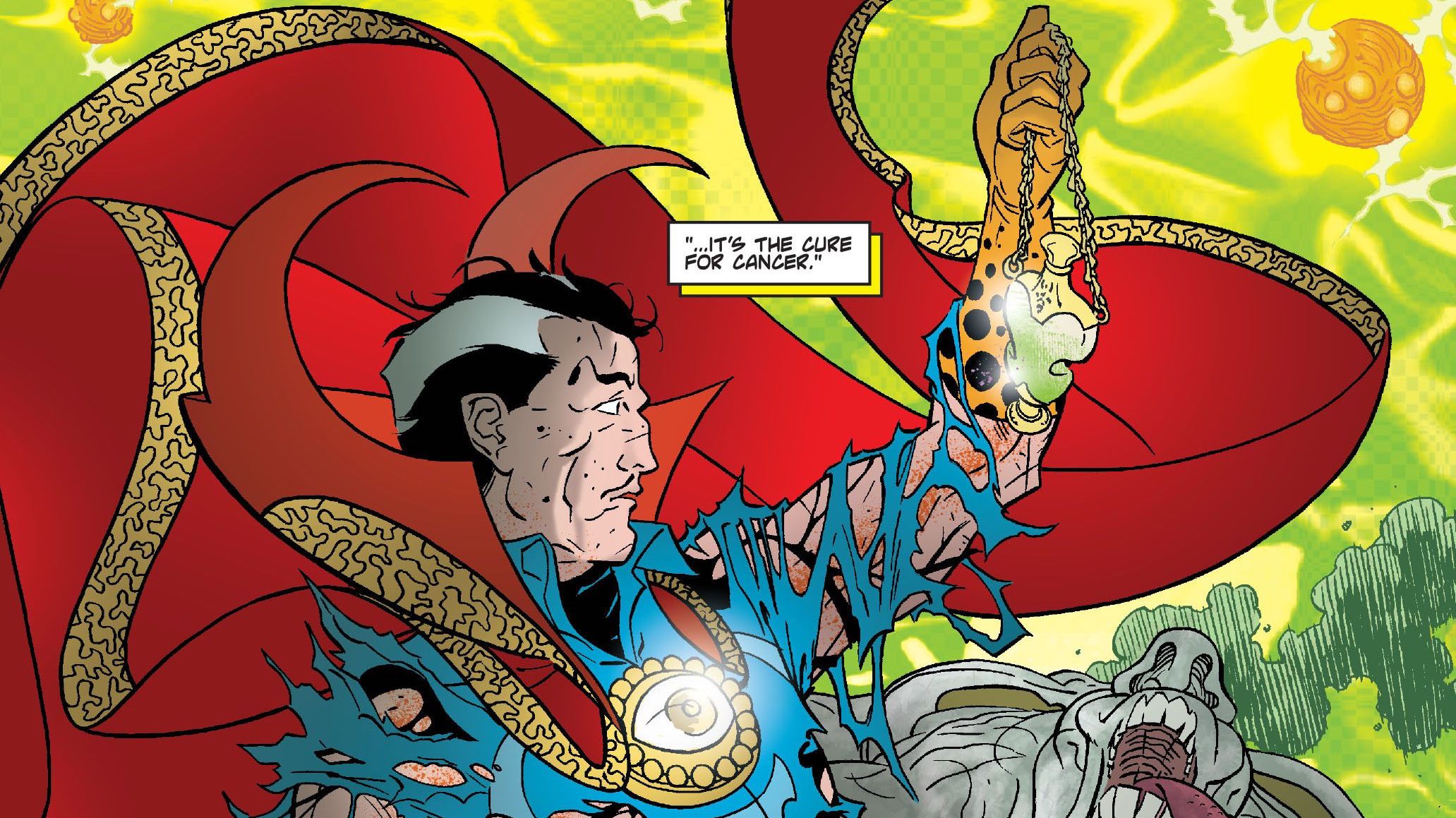
Join the community on Reddit for the latest Marvel & DC news!
Of all the comics in existence, none pose more intrigue and have mystified an audience quite like the Doctor Strange comics. He’s battled demons and entities on the Astral Plane and in the Dark Dimension. He was finally introduced into the MCU in 2016 and with him came a series of mind-bending special effects. His history is as, well, strange, as any. If you think his colorful imagery, out of this world stories, and trippy backdrops came from the imagination of somebody on drugs, you wouldn’t be too far off.
Dr. Strange was created by two of the greatest comic book minds in history. Of course, I refer to both Stan Lee and Steve Ditko. He fittingly first appeared in Strange Tales #110 back in 1963 but wouldn’t rise to prominence until a few years after. He was created as a way to bring something new, fresh, and exciting to the Marvel Universe. But for a short while, Stan Lee wasn’t too sure about him. “Well, we have a new character in the works for Strange Tales (just a 5-page filler named Dr. Strange) Steve Ditko is gonna draw him. It has sort of a black magic theme. The first story is nothing great, but perhaps we can make something of him– ’twas Steve’s idea and I figured we’d give it a chance, although again, we had to rush the first one too much.”
Origin
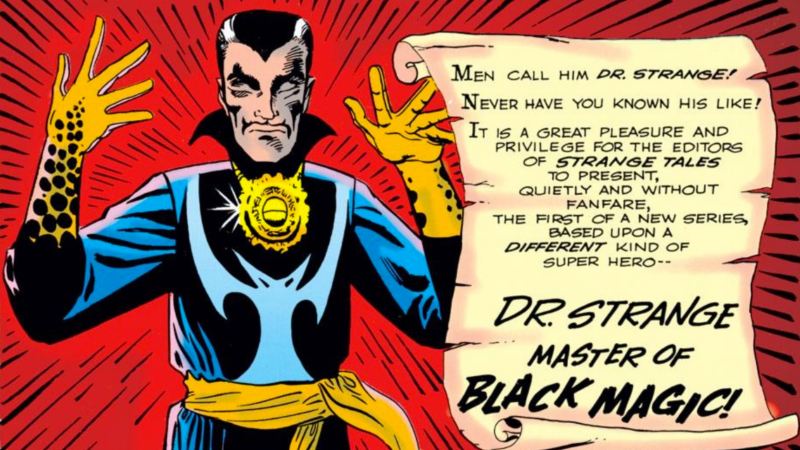
Due to the success of the 2016’s movie, his story is fairly well-known. Dr. Stephen Strange was a surgeon who thought himself to be the best at what he did. He worked on only the most high-profile of surgeries and amassed wealth that most only dream of. With his work, however, came selfishness and egotism.
While driving his sports car, Stephen Strange suffers a car accident. As a result of the accident, he is left without the use of his hands. As you may imagine, a world-class surgeon with no use in his hands is no different than a regular man. He hears the story of a man, The Ancient One, who is capable of healing those who can’t be healed. Eventually, after a long search, he finds him and learns that there is more to life than money, fame, and luxuries. After his change of heart, The Ancient One begins to teach Strange the Mystic Arts. Once taught, Dr. Strange takes up residence in the Sanctum Sanctorum and becomes the Sorcerer Supreme.
If that was all that there was to the character, his history would be as boring and frustrating as a commercial in your favorite television show. So, it’s a good thing it’s not.
Imagination meet reality within Doctor Strange Comics
When Lee and Ditko created their Doctor Strange comics, I’m certain they knew exactly what they were doing. They had successfully found a way to unleash their most bizarre thoughts all-the-while giving a large part of America what they sought…a giant acid trip. His comic books were littered with more color than a rainbow and beings that could have only been cooked up while being cooked. But it wasn’t just that which made Strange, strange. Just think about the names of the items in his books. He wore the Cloak of Levitation on his back and the Eye of Agamotto around his neck. At the time of his initial publication, nobody even came close to who or what Stephen Strange was.
Doctor Strange comics drew heavy influence from the Eastern world. Of course, these mostly fed into Eastern stereotypes. For example, the Ancient One was an Asian man who possessed many of the characteristics the western world would think he’d have. A Fu Manchu mustache. Magical abilities. In a sentence, as mentioned the Ancient One was one big stereotype. This wouldn’t fly in today’s world, but it flew in the 1960s.
Dr. Strange was special.
Magic and comic books
Up until his appearance, comic book creators struggled to find a way for magic to work in superhero books. Before his time, the realms in which superheroes resided in, were bound by the physics of the world in which they existed. His books sought out and successfully found a way for the two, magic and superhero world limitations, to co-exist. For fear of giving him too much credit, his books paved the way for magic users of all kinds.
- Zatanna
- John Constantine
- Shaman
- Magik
- Raven
Without Dr. Strange these characters may never have had a chance to exist.
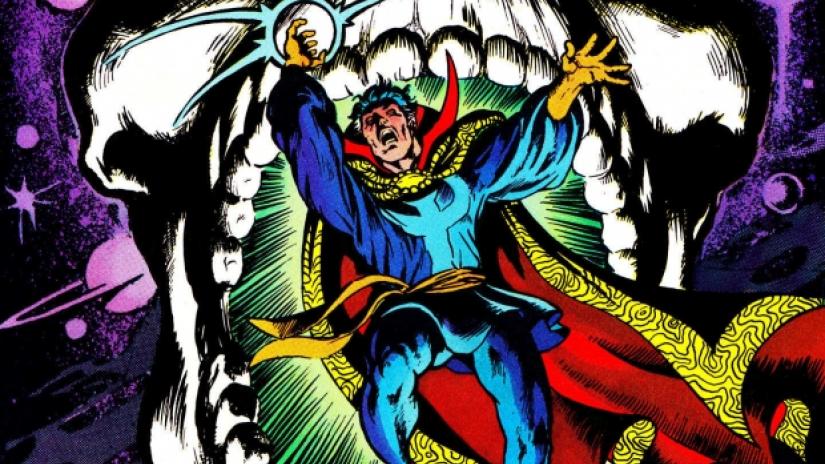
The items that Strange carried on him were, to say the least, interesting. The Eye of Agamotto, for example, isn’t as it seems in the MCU. No, it is not the Time Stone that Thanos needed to complete his Gauntlet. Instead, it’s a powerful talisman capable of many great feats. The Eye of Agamotto is to Dr. Strange what Superman‘s powers are to him. It does whatever Strange or his writers need it to do. It has caused levitation, teleportation, mind manipulation and every other form of ‘
Doctor Strange comics reach a new audience
Dr. Strange rose to new heights during the hippie movement. The hippie movement involved sex, drugs, and a new way of life that didn’t cater to “the man”. The American Hippie movement began as a way for young adults to express moral dissatisfaction with what was happening around them. The age group, which shared a love of communal living and drugs, believed that love could change the world. While I don’t disagree with them, the world could always use more love, the methods they used would be ignored today.
The 1960s saw a rise in freedom of speech. Hippies began speaking out against the things that bothered them about the American way. They had grown tired of the media, the advertisers and the politicians telling them what was important. And they had become fed up with how their country was being run. They wanted to be happy and believed that happiness in itself was a goal in life worth having. “Do whatever you want,” they’d say, “as long as it makes you happy.”
But it wasn’t just a desire for happiness that fuelled the movement. And at the heart of it all was music.
Music
Music united the youth. It gave them a sense of belonging. It gave them a way to talk with each other in a manner that the older generation knew nothing about. Music gave them a way to escape mundane America and something to rally around.
The musical influence wasn’t just in its rhythm and words, however. With music came personal style and nothing influenced personal style quite like a person’s hair. More specifically, long, Beatles-like hair. No style of hair was as copied as The Beatles haircut. While parents and the old guard hated the cut, the youth embraced it. The cut, with its traditionally long and messy style, characterized the wearer. It told a story that only the youth understood. If you saw a person with a long Beatles-like hairstyle you knew exactly how they thought, they hated the government and that they knew exactly how and where to find the best drugs. The haircut, and long hair, in general, became a defining trait of the hippie.
However, as much as music and hair told the story of the hippie, the two mean nothing without the actions of a hippie.
Overdue change
The 1950s was a decade defined by doing the right thing. The decade held well-dressed people that believed the only way to be successful was to live a life governed by rules, guidelines, and expectations. Because it entrenched a belief system as strong as this, nobody ever deviated from it…until the 1960s. The hippie did and acted in ways that made them feel good. They said what they wanted to say and did what they wanted to do. And of all the things that they did and said, none were more taboo than sex.
Sex had become a way to express oneself. They believed that sex was not something to be ashamed of but instead was something to be embraced. While the generation of the 1950s spent their time teaching proper sexual etiquette, the generation growing up in the 60s spent their time exploring it. They were tired of being told how high to jump and wanted to jump because they felt like it. And so they had sex.
…then there was the drugs.
Drugs
Marijuana was prevalent in the hippie movement. For a generation raised to be puppets of society, marijuana allowed them to become more free in their thoughts and actions. The culture believed that in order to change one’s values meant that the way they perceived the world had to change. And the way to change perception was to give someone a mechanism that allowed them to see the world differently. As much as society tried to curb this and teach the youth about the dangers of marijuana, it didn’t work. Even images of police arrests, jail time, and the like change things. In fact, they only made it worse. Those that smoked the drug knew all too well what marijuana actually did. Seeing videos, hearing lectures, and reading about its problems only made the youth feel like they were being lied to. This made them want to act against authority even more.
LSD was a chemical drug that allowed the user to experience an out of this world adventure without actually having to leave the world. Anybody who took the drug felt as though they had undergone an enormous change. It was a confusing time. Those who took it felt like they were a different person and nobody, the authorities included, understood why.
Some research was conducted to figure out exactly how a person was changed under LSD. At its conclusion, it was shown that a person didn’t actually change physically, mentally, or emotionally. No, the research showed that after just a single dose of LSD, a person and what they wanted, changed. Instead of settling down with a family, house, and children, a person would suddenly want to travel and live a more wandering life. LSD caused its user to look at the world differently. Suddenly, an object or thought that would horrify anybody off the drug, was looked at with beauty and a sense of divine quality.
Enter Doctor Strange comics
Through Steve Ditko’s beautifully orchestrated drawings, the world that Dr. Strange lived was as lively as an acid trip. Doctor Strange comics were so far fetched and out there that many readers of the time thought that Ditko was on an acid trip each time he put a pencil to paper. This was as far from the truth as imaginable but his imagination made people believe it. Certainly, Ditko deserves a ton of credit for what he did with Spider-Man, but I’d argue he deserves more credit for Dr. Strange.
Just because Ditko chose not to partake in the 60s and 70s pastime didn’t mean that everyone did. Not by a long shot.
The 1970s brought a new direction to the Doctor Strange comics. With his new direction, came a brand new creative duo. Steve Englehart and Frank Brunner created some of the most mystical and acid-induced runs that the character had ever and would ever see. The pair recount stories of how they would get together for dinner every couple of months. But it wasn’t dinner they were interested in. After dinner, the two would take a hit of something, wait for it to set in, and begin brainstorming new ways and directions to take their character.
Comic book trip
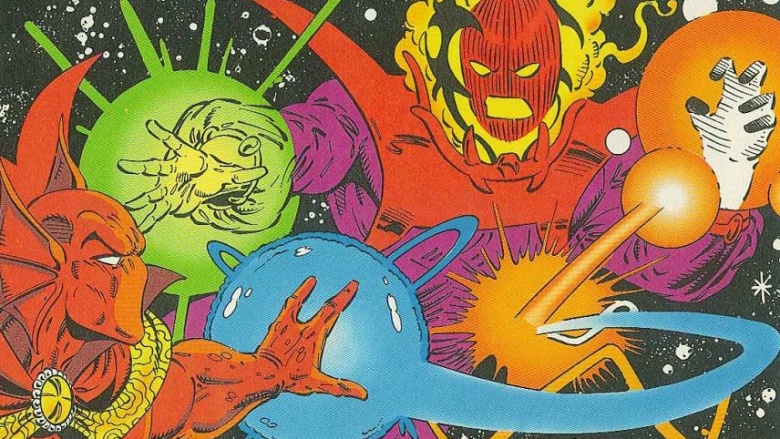
Over time, the character had become synonymous with the hippie movement. Not only did the pages of his books mimic a euphoric high, but the content inspired the readers to study Eastern mysticism, religion and philosophy. Strange’s books became a living and breathing metaphor for the age that they lived in. Was Dr. Strange a popular character? Depends on who you ask. Among mainstream readers, I’d argue that he wasn’t. However, within the psychedelic niche that he lived in, he was practically worshipped.
Dr. Strange represented more than just an acid trip. He presented his readers with subjects that were gaining popularity outside of “normal” circles. The Occult. Black Magic. Time Travel. Dimensional Possibilities. Mysticism. Alternate Realities and Existences. Just imagine for a moment, taking a hit of acid or a drag of marijuana and engaging in a conversation about the Occult. Dr. Strange provided readers a dimension of life that wasn’t typically brought up for conversation at the dinner table.
There really wasn’t any place in the universe or moment in time that was off limits to Dr. Strange. Steve Englehart has admitted that his favorite run with the character happened between issues #12-14 of Marvel Premiere. In this story, he basically meets God and sends his readers whirling in their chairs with thoughts of religious grandeur. His second favorite story? Doctor Strange #10-13. In this story, the Earth is destroyed by one of his many enemies, Baron Mordo, and recreated as it was before the destruction by Eternity. This in itself is pretty crazy stuff. But it gets crazier when it’s revealed that only Strange remembers that everybody on the planet had, for a time, died.
And that was only a small part of the trip the two took their readers on. During Marvel Premiere #14, Stephen Strange, with the help of the mystic creature Sise-Neg (Genesis spelled backward), watches as the entire Marvel Universe is created. Side-Neg possessed tremendous power…a
For Englehart, there was no place that Strange couldn’t go.
These stories weren’t Englehart’s first foray into Dr. Strange. In his early work with the character, he made Strange able to project blasts of energy from his palms. While impressive, it lacked what the character could and would do. When he got a second chance at the character, Englehart didn’t waste it. This time, rather than only being able to shoot beams from his palms, Strange was able to do more. Strange’s abilities grew alongside Englehart’s own fascination with magick…a fascination that followed him through his life.
Roger Stern
While other writers hired at the time (Chris Claremont, Jim Starlin, and Frank Miller) rose to superstardom, Roger Stern quietly cemented himself as one of, if not the best Dr. Strange writer in history. Following Englehart was no easy task and Stern knew it. Instead of trying to replicate his work, he opted to take the Sorcerer Supreme in a direction that he hadn’t gone before.
Stern’s epic run took the good doctor down a path of true superheroism. Up to his run, Dr. Strange typically did battle with demons and other creatures that threatened the very fabric of Earth’s existence. Stern decided while that aspect made Strange great, it didn’t ground him. So, on his run, in addition to otherworldly beings, Strange also fought the same villains and petty criminals that other heroes fought. Stern also changed those most familiar to Strange. Gone were his love interest Clea and now supporting him were his friends Wong and Sara.
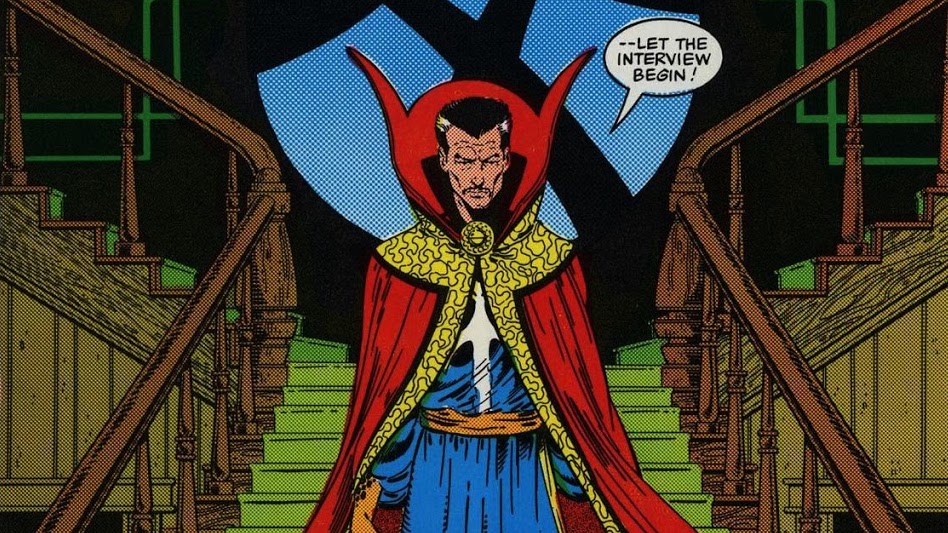
He took the character on a wild ride that saw him rescue Clea from Dormammu and witness the first meeting between Rama Tut and the Fantastic Four. To ground him more, Stern’s Doctor Strange watched as his love interest, Clea, died. Since his inception, Dr. Strange seemed out of this world…untouchable by normal life. Roger Stern took that and tossed it right out of the window.
But his best work was yet to come.
New ideas
In the late 1980s, Roger Stern paired up with eventual Hellboy creator Mike Mignola and gave the world “Triumph and Torment”. In this larger than life story, Dr. Strange teams up with Dr. Doom to bring Doom’s mother back from Hell and Mephisto. The book brilliantly shows just how dark and edgy the Marvel Universe could be. Of all the Strange stories not to be missed, this one ranks at the top.
Then came Brian K. Vaughn, presently of Saga, and Y: The Last Man fame. Nobody did what Vaughn did. His work, “The Oath” sees Dr. Strange traveling the world trying to find a cure for his friend Wong’s brain cancer. If Stern grounded Strange, Vaughn buried him alive. What makes Vaughn’s Doctor Strange comics so incredible is that they bring the character to his most basic and instinctual roots. It takes the all-powerful Sorcerer Supreme and reminds him that there are things out of his control. Vaughn presented Dr. Strange as a man capable of bending reality, incapable of healing his friend. In short, he humanized him.
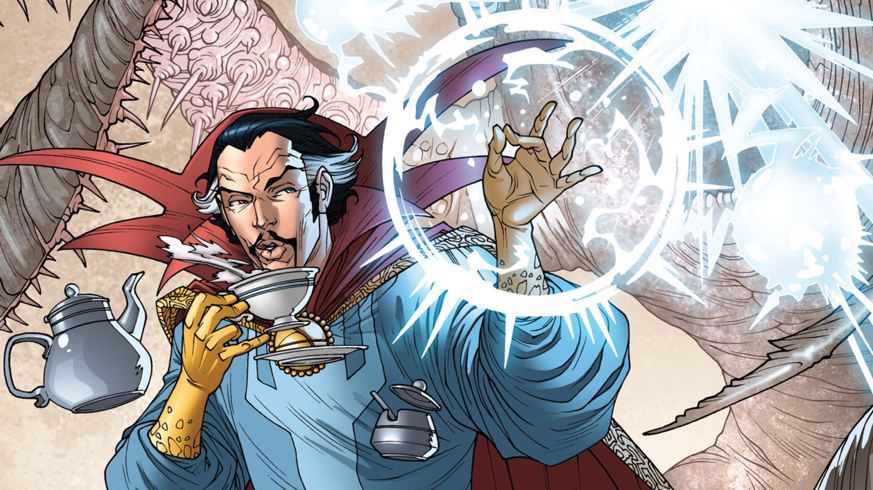
Doctor Strange comics offered what no book could or can offer…a way to experiment with the medium. The stories were and are bizarre, trippy, and downright outlandish. And that’s why he gained such a notorious following. The X-Men, Spider-Man, Fantastic Four, and Avengers couldn’t do what he could do, go where he could go, or offer what he could offer.
Through his psychedelic imagery, Dr. Strange ignited the imagination of an entire generation. He became a symbol for a changing nation and forced his viewers to look at the world just a little different. In a different era, he may not have become as important or as followed as he did. But in his era, there was no stopping his success.
Cheers,
Joel
Liked this article? Join the community on Reddit for the latest Marvel & DC news!

